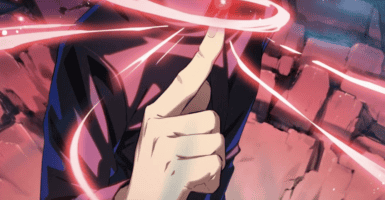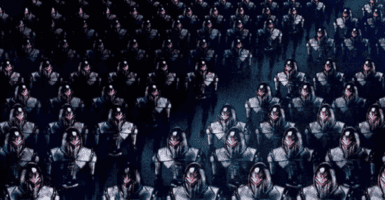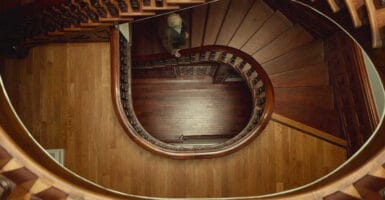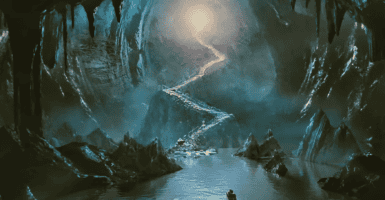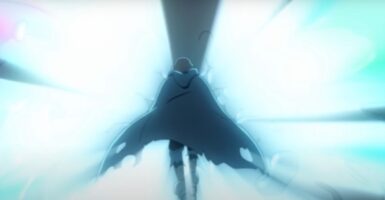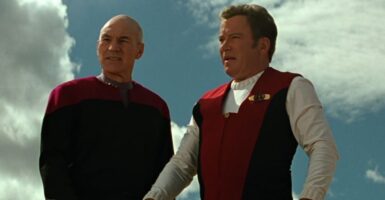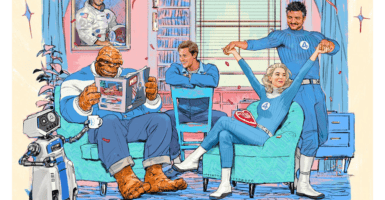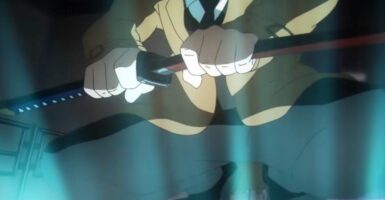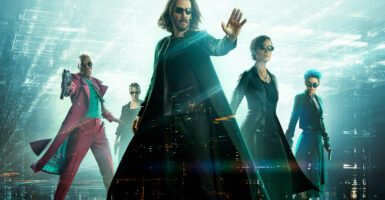Cosmos: A Spacetime Odyssey Post-Game: A Fine Meal Of Eye Candy And Brain Food
Carl Sagan's groundbreaking series returns.
This article is more than 2 years old
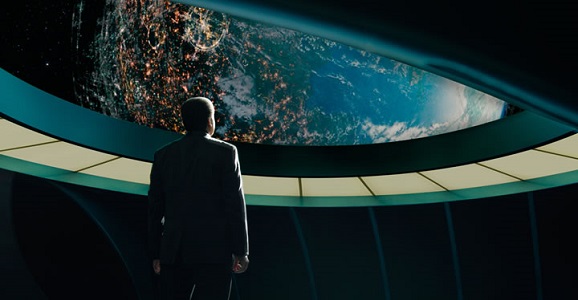 Primetime network television rarely dips into interesting real world affairs, and when it does, it’s usually true crime or whatever things happen on 60 Minutes. I’m obviously not talking about “reality television,” as no one is learning anything from that. Enter Seth MacFarlane, who has built an empire out of referencing the 1980s in filthy ways through talking teddy bears and Sunday nights on Fox. He gets all the credit in the world from us here at GFR for spearheading a revival of Carl Sagan’s landmark science series Cosmos. But it was a monumental challenge, for audiences today have more insight into our universe than any single generation in the past, all thanks to the Internet. Keeping things fresh and interesting was only as difficult as hiring astrophysicist Neil deGrasse Tyson as the presenter and compiling a retina-popping collection of space photography and CGI eye candy. The final product, Cosmos: A Spacetime Odyssey, is a bite-sized lesson on the universe that grows exponentially each time you chew on the information given.
Primetime network television rarely dips into interesting real world affairs, and when it does, it’s usually true crime or whatever things happen on 60 Minutes. I’m obviously not talking about “reality television,” as no one is learning anything from that. Enter Seth MacFarlane, who has built an empire out of referencing the 1980s in filthy ways through talking teddy bears and Sunday nights on Fox. He gets all the credit in the world from us here at GFR for spearheading a revival of Carl Sagan’s landmark science series Cosmos. But it was a monumental challenge, for audiences today have more insight into our universe than any single generation in the past, all thanks to the Internet. Keeping things fresh and interesting was only as difficult as hiring astrophysicist Neil deGrasse Tyson as the presenter and compiling a retina-popping collection of space photography and CGI eye candy. The final product, Cosmos: A Spacetime Odyssey, is a bite-sized lesson on the universe that grows exponentially each time you chew on the information given.
I don’t think this update could ever outshine Sagan’s original work, because Sagan was more interesting in reminding us that we are both something special and impossibly tiny in this universe. But Fox’s series is already a billion times more visually appealing, because the goal of this show is to remind viewers that space is cool and we should all be a lot more interested in science. We lose Sagan’s one-on-one and take in Tyson’s high school lecture. But that’s okay with me, because this needs to be something more. It needs to go everywhere that Sagan couldn’t back in the late 1970s when he was pulling all of this together. If bombast has to enter the picture in order to remind people that life is more than just pop culture and social media updates, so be it. (By the way, if you guys could retweet this article, that would be super.)
Though Tyson is telling us things that may come as new information to many viewers, anyone with a driven interest in science already knows everything that’s being said here. So it becomes a high-definition trip across our world and into the titular cosmos that remains stunning throughout. Even when the camera is centered on Tyson’s face, some form of fiery dynamism is happening on either side of his cheeks. I don’t think I’d be exaggerating if I said this was the most beautiful thing I’ve seen on TV since the Beijing Games’ opening ceremonies.
So what are we looking at the whole time? The series is segmented in a way that keeps the information memorable and exciting, where the commercial breaks all come after Tyson fades out on a minor cliffhanger. We are introduced to a sleek new take on the original series’ Spaceship of the Imagination, and the Cosmic Calendar experiences a digital evolution of its own. From our home planet, we quickly explore the rest of our solar system, then set out into the farthest reaches of observable space, examining each layer of our “Cosmic Address.” With flat, blunt animation, we are told the before-his-time story of Giordano Bruno, whose assertions that the universe contained other worlds were met with a most brutal rebuttal. (No one expects the Roman Inquisition!) We then travel back to the Big Bang (sunglasses not included), through the Oort Cloud, beyond the Milky Way galaxy and back, down to the same California desert where Sagan spoke to us over 30 years ago.
It’s when Sagan’s legacy is the focus that A Spacetime Odyssey returns to its roots, as a more grounded Tyson recalls how his life was changed forever after a visit with Sagan, who became his mentor. The locations and voiceovers are a great touch, and I hope they continue to pop up in each episode. It’s equally great to see things that could never have been known as the first series was being produced, such as Voyager I‘s legendary voyage and Pluto’s demotion to just another “outer planetary body.”
I hope that Cosmos only gets better, as its starting-off point was as strong as I could have hoped for. (I secretly worried it would be a disaster.) So long as the humanity remains prevalent in the spaces between the stars, I think we’ll have something inspirational to look forward to for the next block of Sunday nights. No flash photography on the Spaceship of the Imagination.
